July 23-26, 2017
One of the first things we noticed at Theodore Roosevelt National Park near Medora, ND was the amazing layers of different sedimentary rocks.
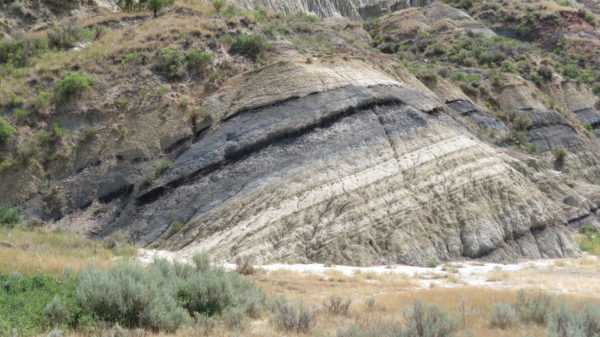 The black layer is lignite, a soft coal that was formed 60 million years ago when this area was Everglades-like swamp. The blue-green-gray layer is bentonite, a volcanic ash, laid down about 55 million years ago. It is clay-like and on the surface looks like popcorn. It absorbs water and is used to seal landfills and ponds, in cat litter and (we found out in Minnesota) in steel production. The brick red layer is clinker, formed when coal veins catch fire and bake the rock above. The remaining layers of brown and tans are sandstones, siltstones and mudstones, washed down from the Rocky Mountains by rivers and streams.
The black layer is lignite, a soft coal that was formed 60 million years ago when this area was Everglades-like swamp. The blue-green-gray layer is bentonite, a volcanic ash, laid down about 55 million years ago. It is clay-like and on the surface looks like popcorn. It absorbs water and is used to seal landfills and ponds, in cat litter and (we found out in Minnesota) in steel production. The brick red layer is clinker, formed when coal veins catch fire and bake the rock above. The remaining layers of brown and tans are sandstones, siltstones and mudstones, washed down from the Rocky Mountains by rivers and streams.
Clinker
In 1951 a 12 foot thick coal vein caught fire, probably the result of lightning, and burned for 26 years. Eventually the rocks above collapsed into the area where the consumed coal had been. The pictures below show clinker which formed when the rock above the fire was baked.
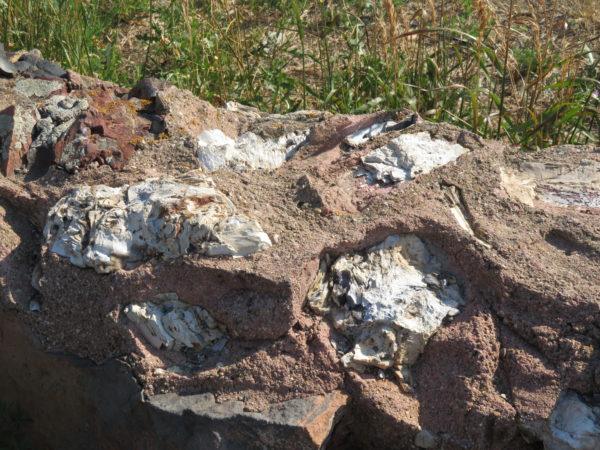 Petrified wood is surrounded by clinker in the photo above.
Petrified wood is surrounded by clinker in the photo above.
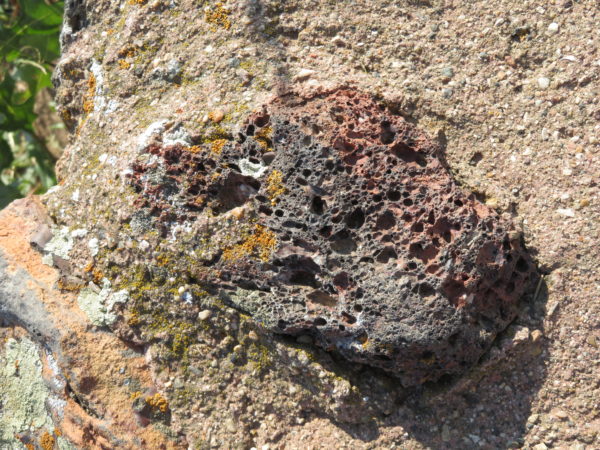 This clinker has holes like pumice or other volcanic rock.
This clinker has holes like pumice or other volcanic rock.
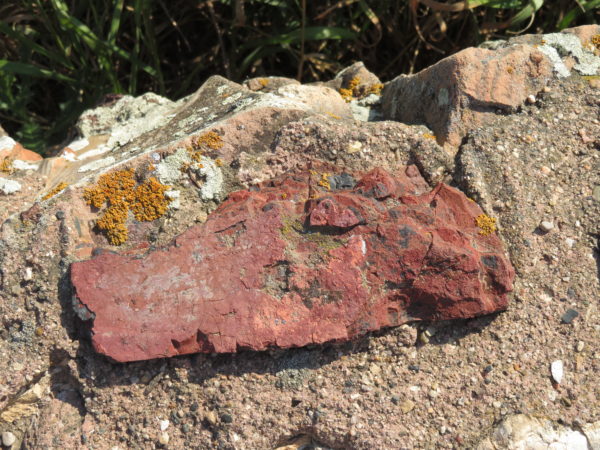 The photo above is an example of brick-like clinker.
The photo above is an example of brick-like clinker.
Cannonball Concretions
Sometimes minerals build around a core in other rock such as shale, clay and limestone. The minerals are harder than the surrounding rock, so as the rock erodes, the minerals are exposed, often in rounded shapes like cannonballs. Both of our examples are column-like.
Caprocks
We saw caprocks in Nebraska when we visited Toadstool National Monument and again here in Theodore Roosevelt National Park. Caprocks occur when harder rock protects softer rock underneath it. The softer rock wears away under the cap, forming mushroom- or toadstool-like formations.
Petrified Forest
Trees similar to modern Sequoia grew in this area of North Dakota 60 million years ago. Minerals, especially silica, replaced the organic material in the the parts of trees that were under water. They became tree fossils or petrified wood. 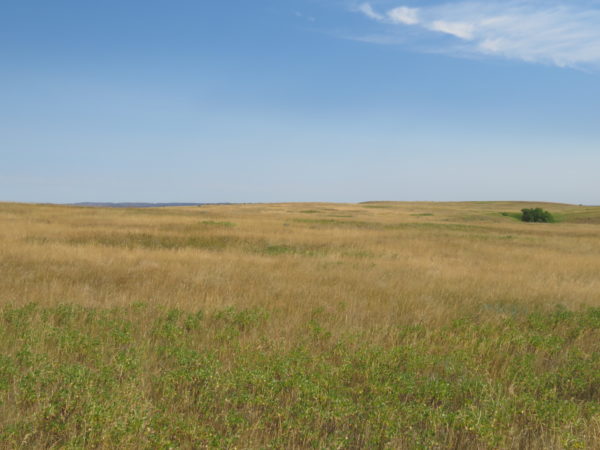 Our path to the petrified forest led us over this grassland.
Our path to the petrified forest led us over this grassland.
Wind Canyon
Sometimes wind is the primary eroding agent in creating fantastic landscapes. This was the case along this trail overlooking the Little Missouri River.
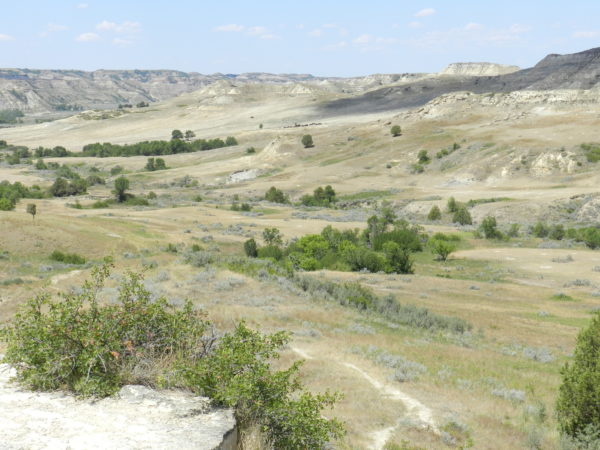 We could hear the bison even at this distance.
We could hear the bison even at this distance.
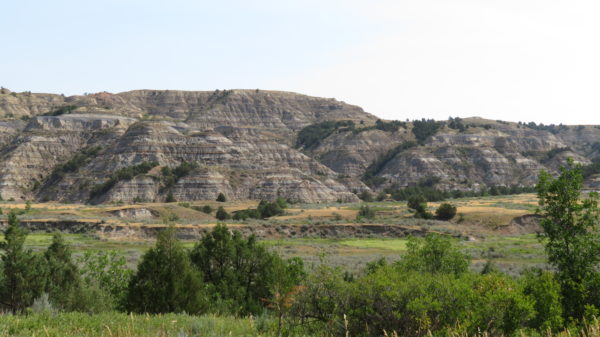
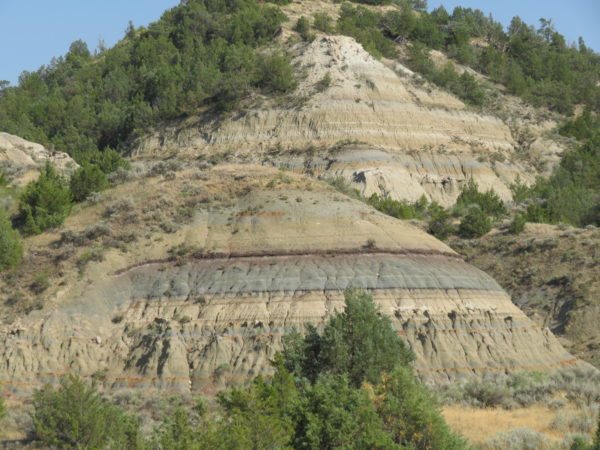
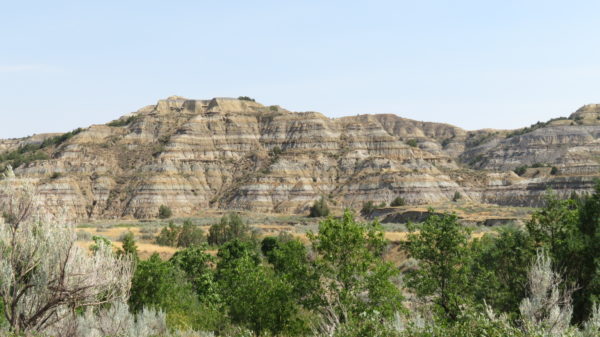
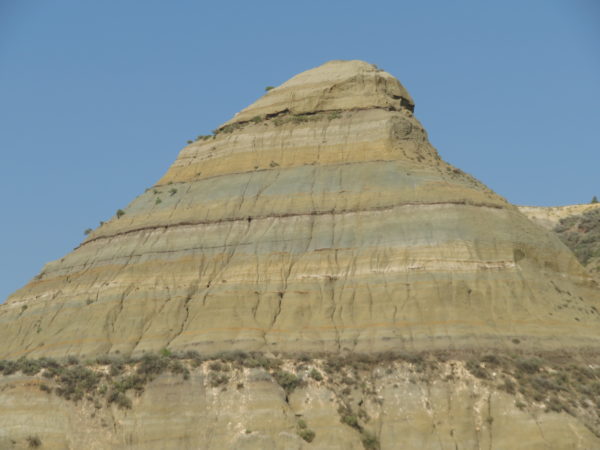
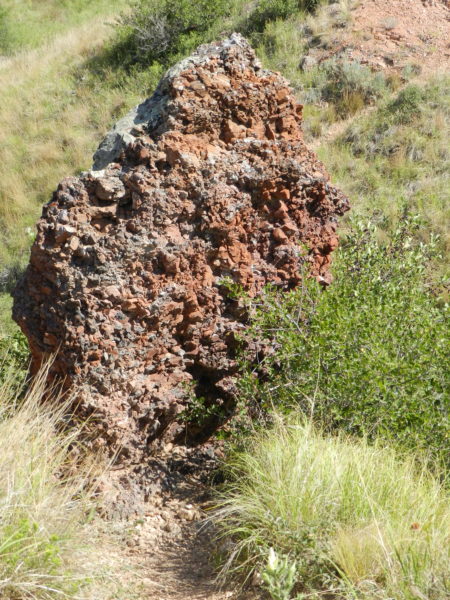
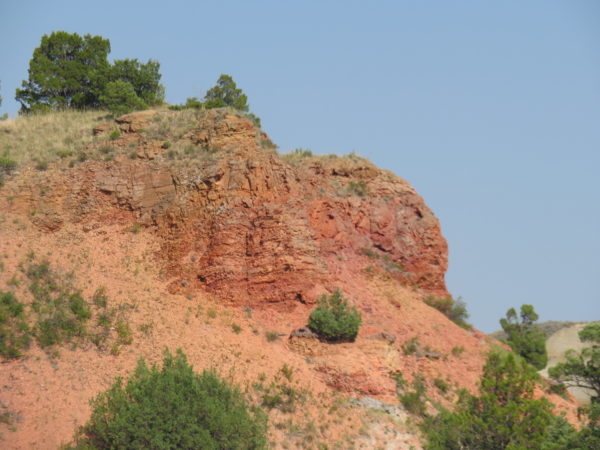
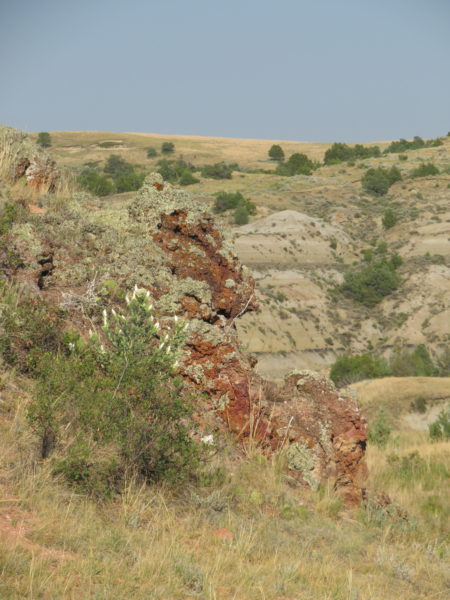
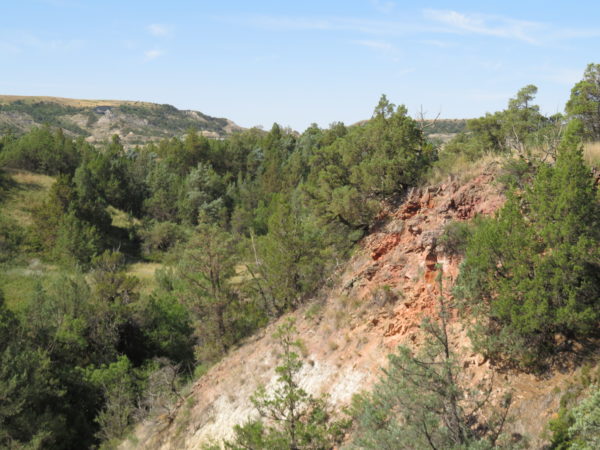
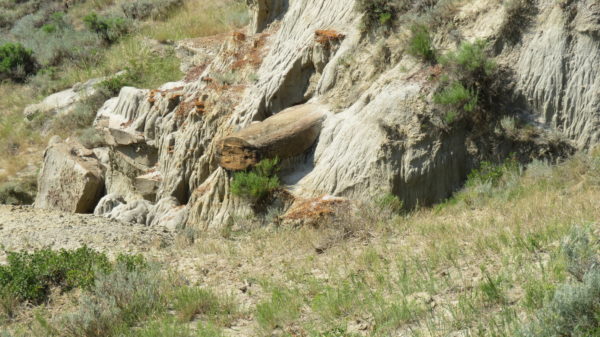
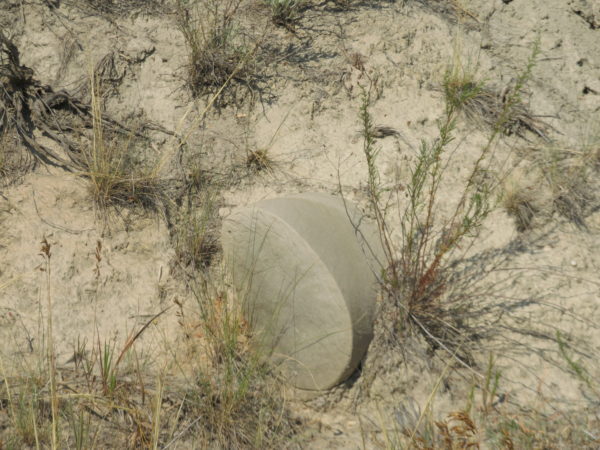
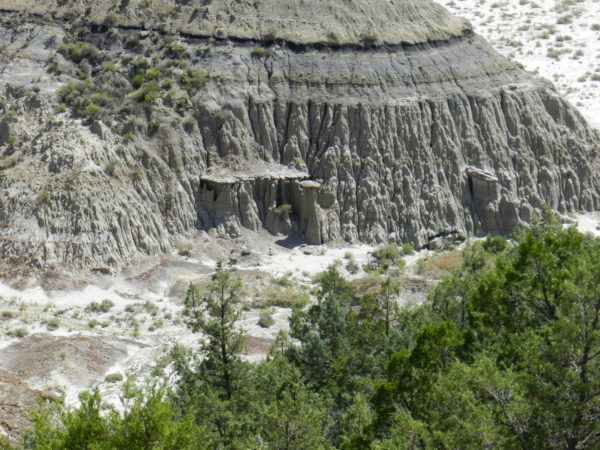
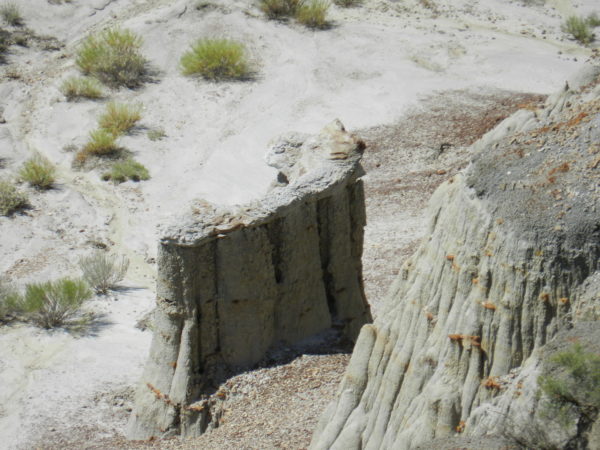
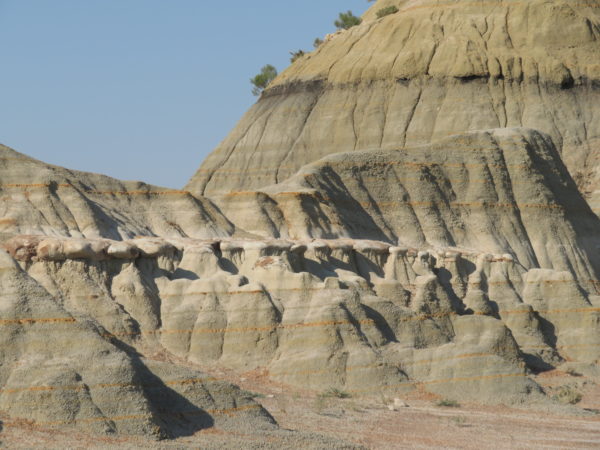
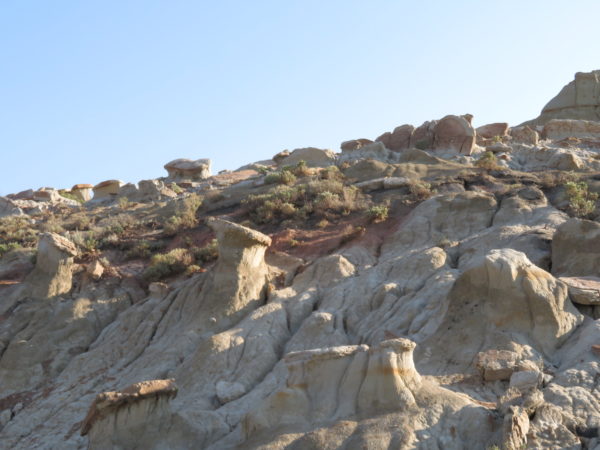
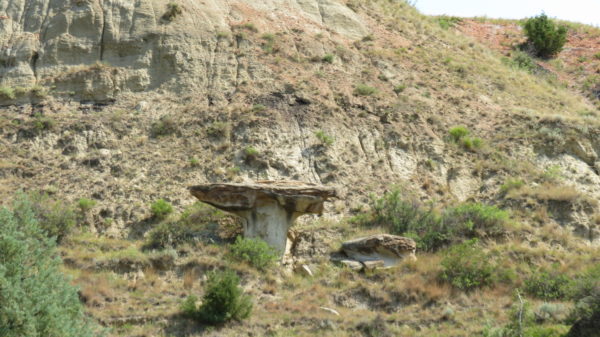
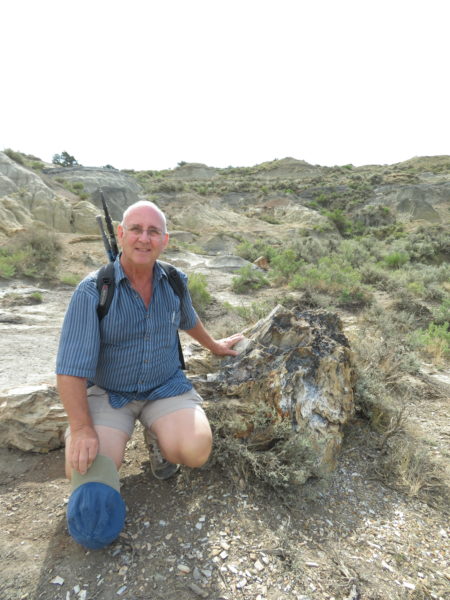
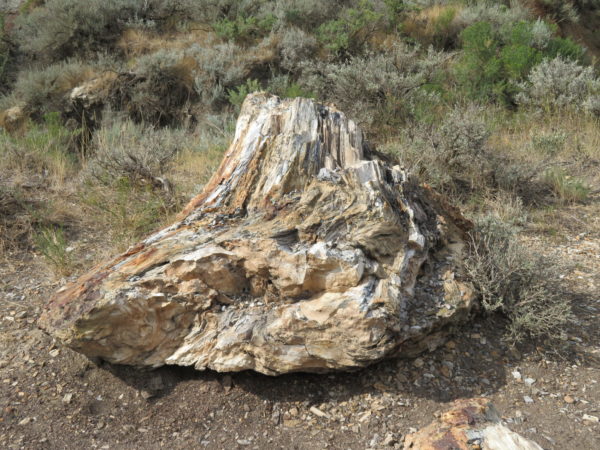
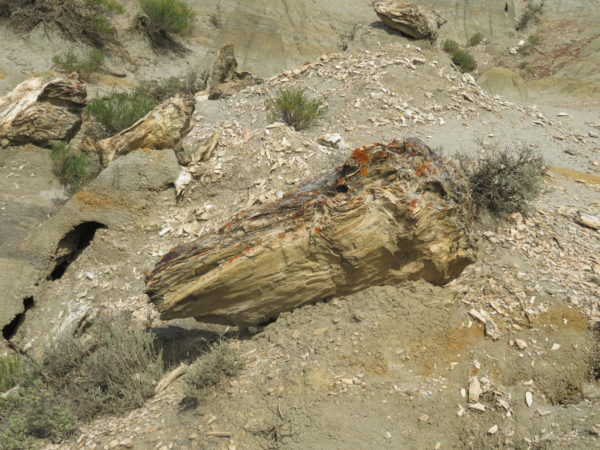
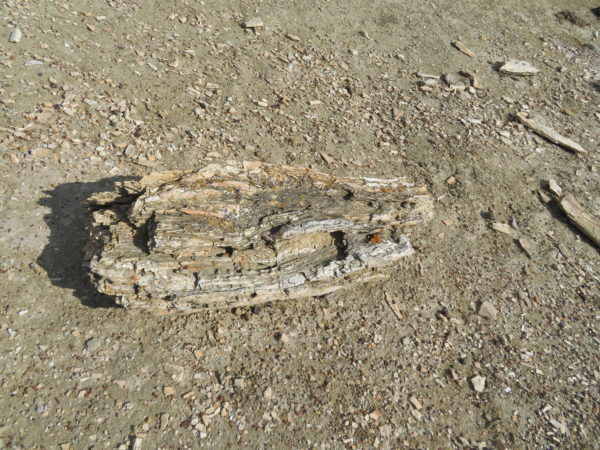
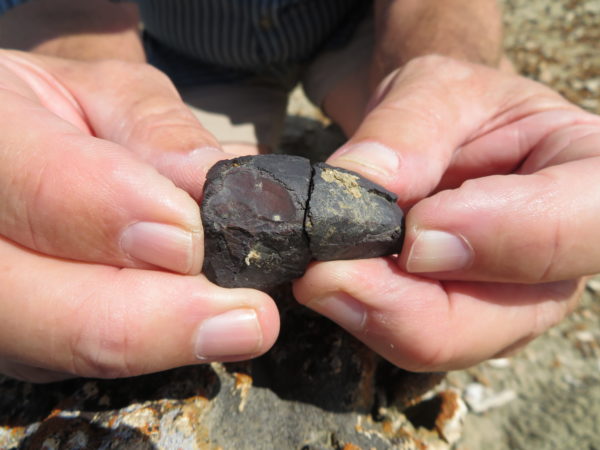
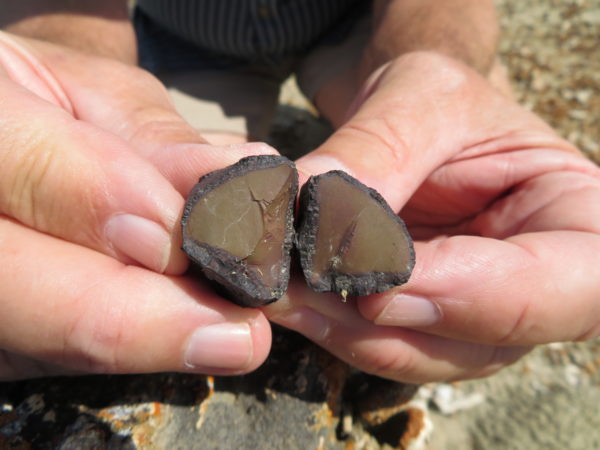
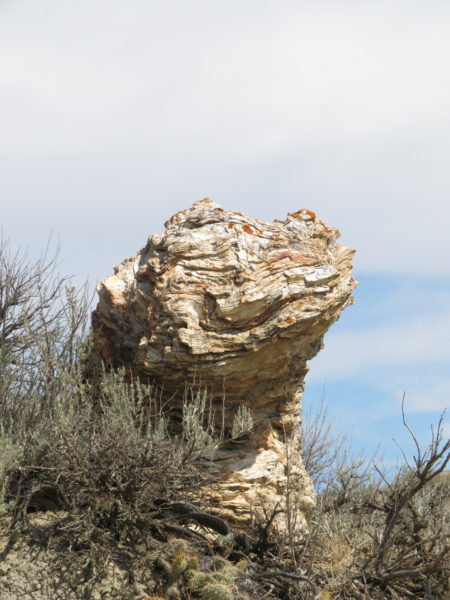
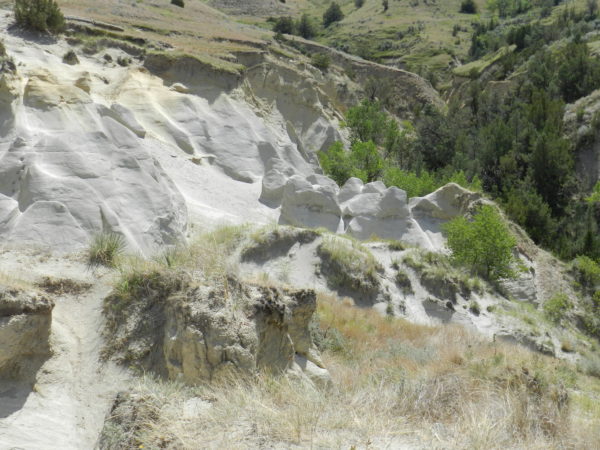
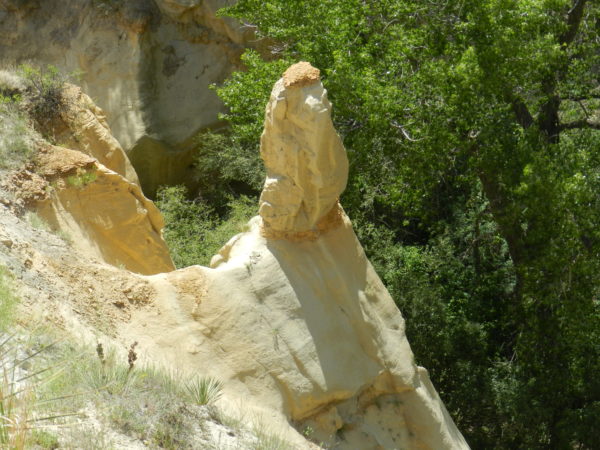
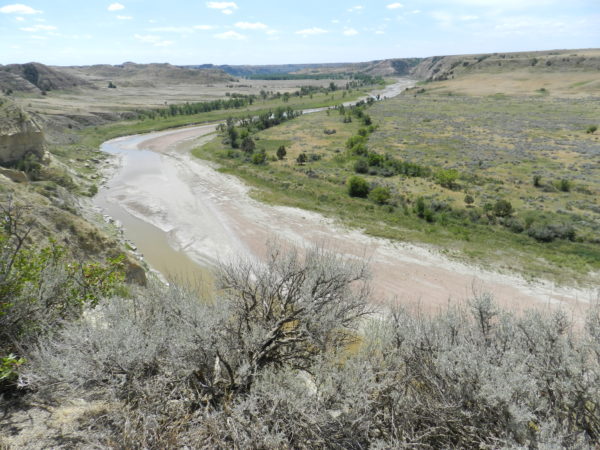
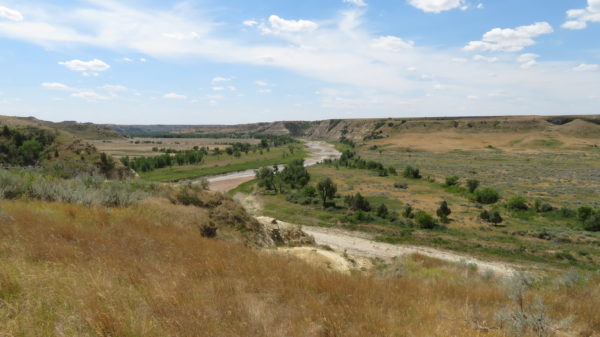
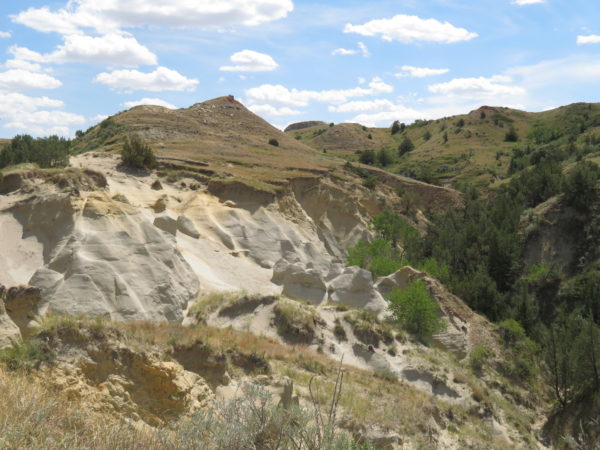
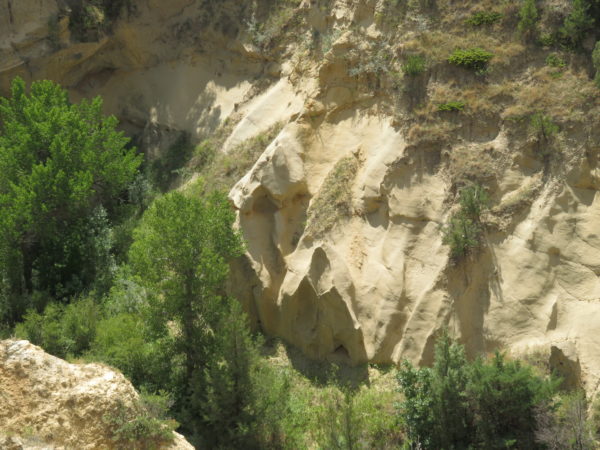
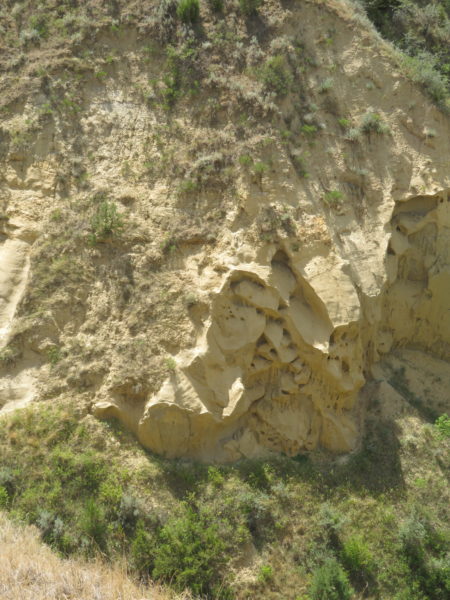
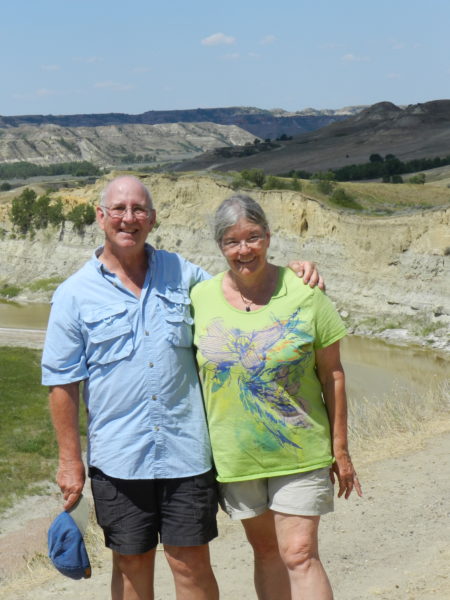
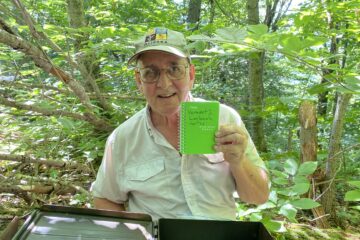
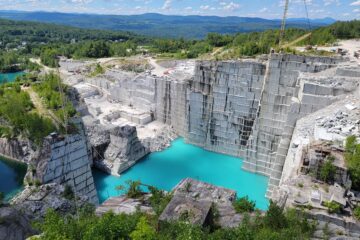
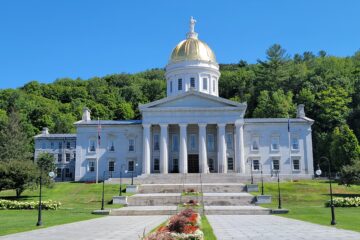
3 Comments
Susan · August 28, 2017 at 6:43 pm
You two look very happy! The pictures are great and it is fun going on the adventure through your great descriptions
Joette · September 1, 2017 at 8:05 pm
I’ll second that!
Roberta · August 29, 2017 at 3:29 pm
Love that wild rugged country! Growing up we had a coal fired furnace to warm the house. Clinkers were part of what developed and had to be removed. We made Christmas ornaments out of them after we sprayed them with gold paint. Had not even thought about clinkers for years. Thanks.